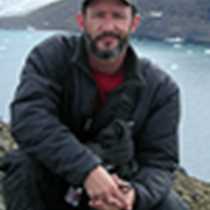A young geologist by training was tasked with travelling on a round-the-world voyage to be the company of a revered British captain. Their voyage began in 1831 and the science and information produced from that historic voyage would forever change the relationship between humans and all life on the planet. The ship they made their voyage on was HMS Beagle, the captain was Fitzroy, and the geologist Charles Darwin. One of the many places they explored together was an ocean-flooded, long, straight, west-east fault-bounded fjord. The fjord that separates two mountain ranges was carved by a large glacier some 20,000 years ago. That fjord is now the political boundary between Chile and Argentina. It is called the Beagle Channel.
On board National Geographic Explorer we saw the Beagle Channel in many moods today as we raced to get into the lee of the channel and out of the Drake Passage. The wind was blowing, the snow and rain was falling, and the birds were flying as the ship navigated west in the ever-narrowing channel. In the days of sail this channel was treacherous to ships that tried to maneuver the waters instead of going around the Horn. Storms and fickle winds have forced hundreds of ships to their doom on the shores of the shallower parts of the Beagle Channel. With modern navigating equipment and an Argentinean pilot aboard, we were ensured a safe passage to the destination from where we began our expedition some three weeks ago, Ushuaia—Gateway to Antarctica and the southernmost city in the world.







